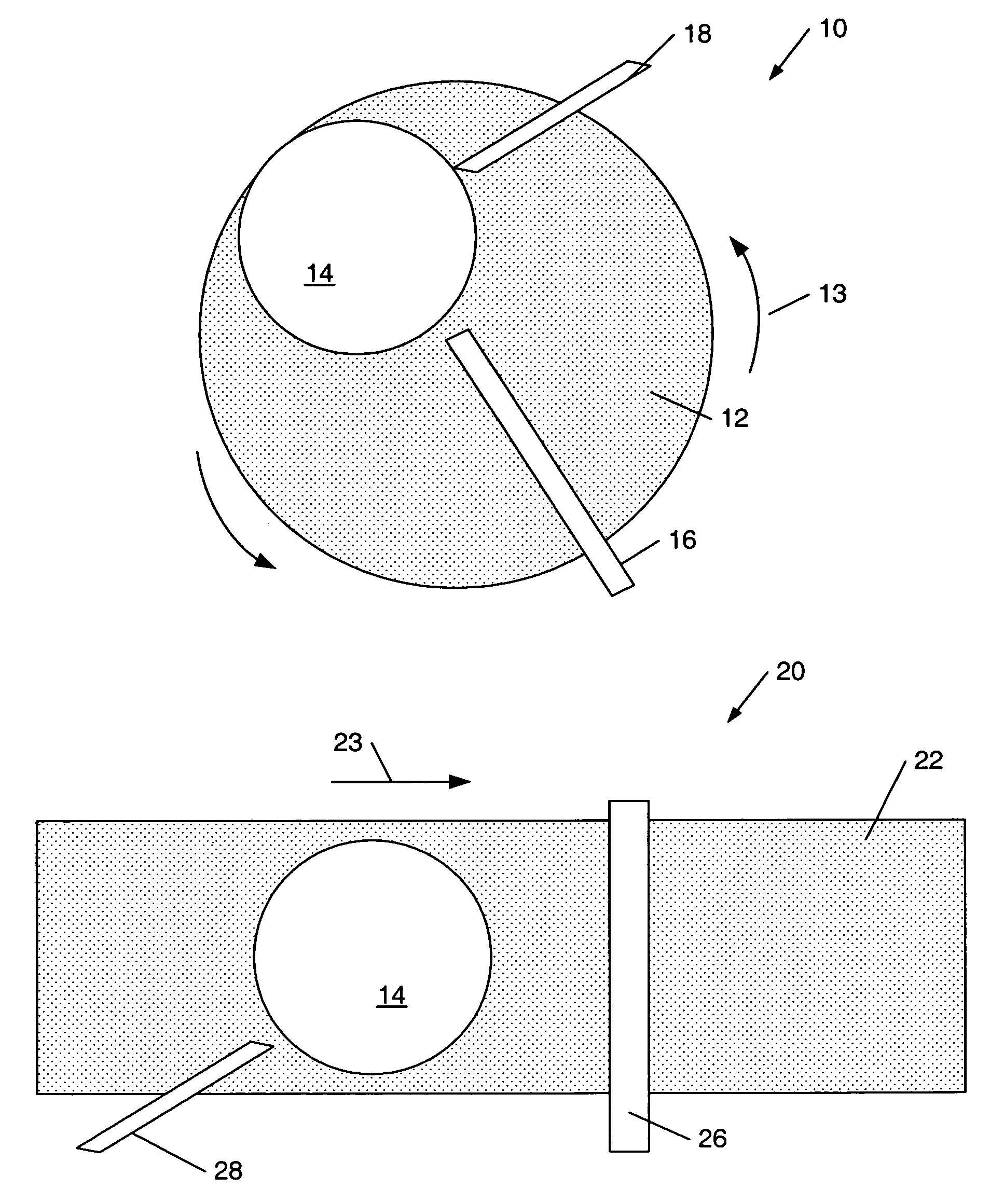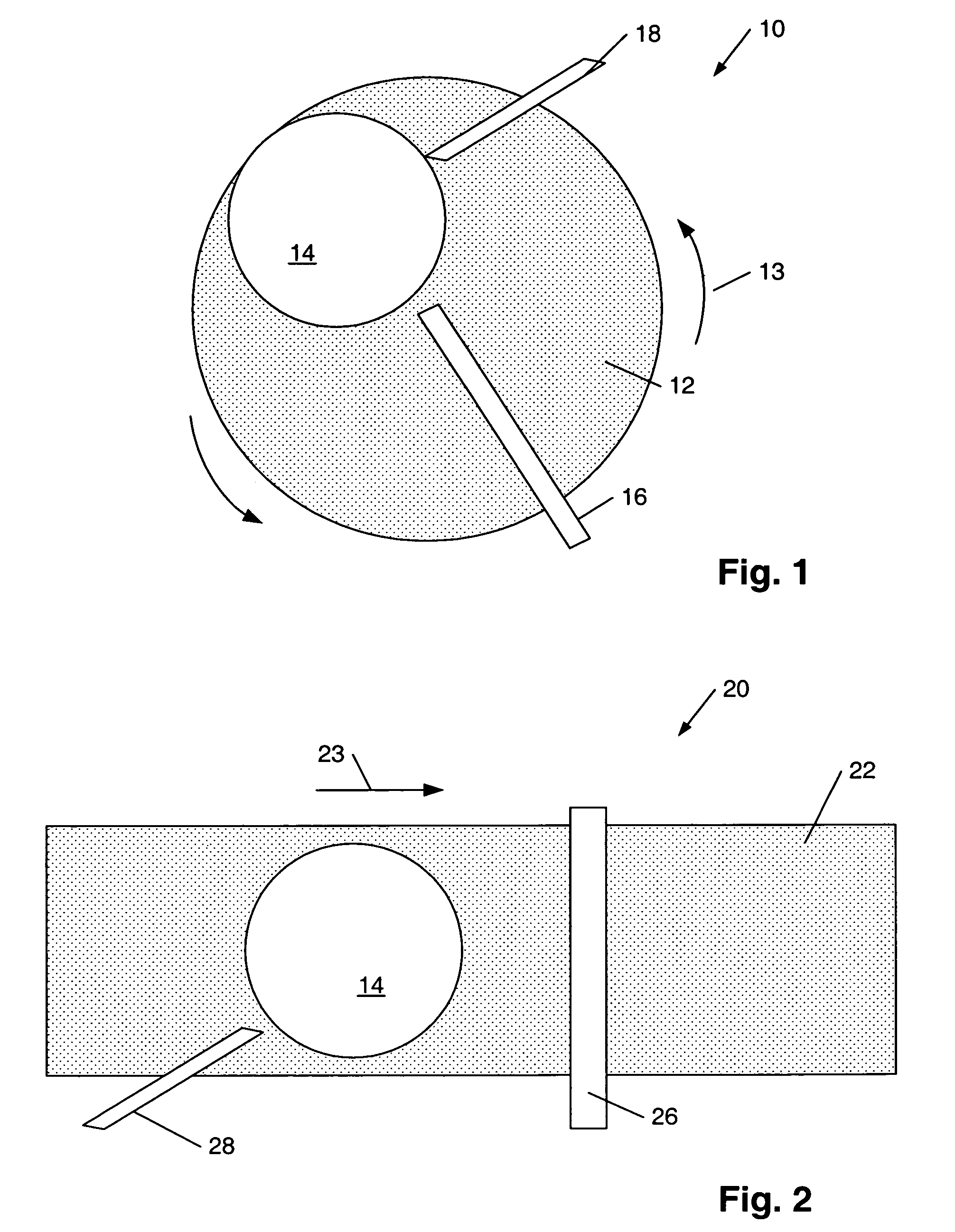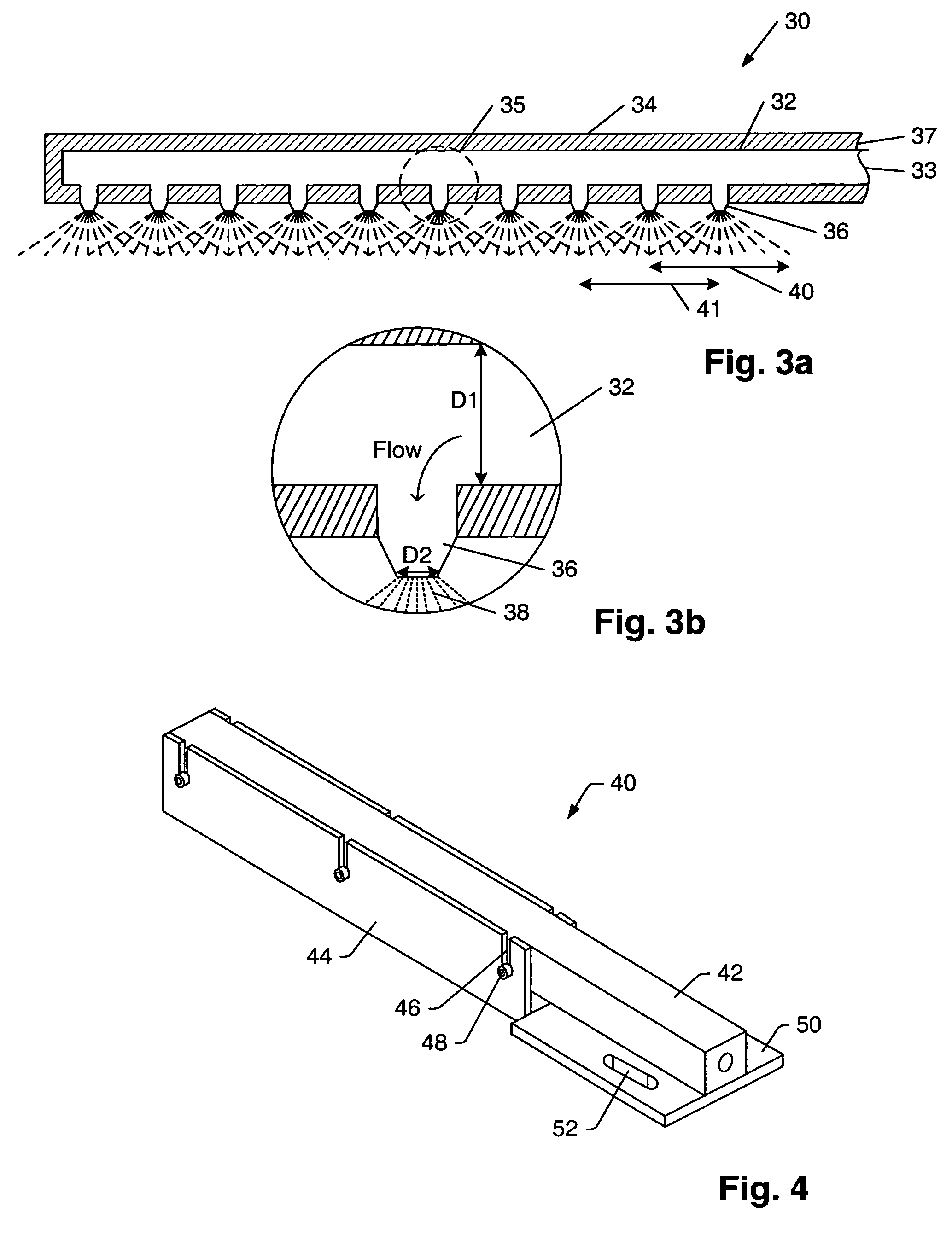Method and system for cleaning a polishing pad
a technology of polishing pad and cleaning method, which is applied in the direction of grinding machine components, manufacturing tools, abrasive surface conditioning devices, etc., can solve the problems of step coverage, distorted pattern image, and inability to form the intended structure, so as to minimize the interruption of the polishing process and improve production throughput , the effect of jeopardizing the quality of the subsequent polishing process
- Summary
- Abstract
- Description
- Claims
- Application Information
AI Technical Summary
Benefits of technology
Problems solved by technology
Method used
Image
Examples
Embodiment Construction
[0031]Turning to the drawings, an exemplary embodiment of a polishing system for processing a semiconductor topography according to the method as described herein is illustrated in FIG. 1. In particular, a partial top view of polishing system 10 is shown with polishing pad 12 positioned below semiconductor topography 14 and spray element 16. Polishing pad 12 may include a variety of materials depending on the process specifications of the fabrication process and / or design specifications of the subsequently formed semiconductor devices. In particular, materials used for polishing pad 12 may vary in hardness and surface texture depending on the design specifications of the polished topography and the process capabilities of the polishing system. For example, a CMP polishing system which has a polishing pad with an abrasive surface may have a higher ratio of mechanical polishing action versus chemical polishing. Moreover, a polishing system with a polishing pad that is particularly har...
PUM
| Property | Measurement | Unit |
|---|---|---|
| Pressure | aaaaa | aaaaa |
| Pressure | aaaaa | aaaaa |
| Pressure | aaaaa | aaaaa |
Abstract
Description
Claims
Application Information
 Login to View More
Login to View More - R&D
- Intellectual Property
- Life Sciences
- Materials
- Tech Scout
- Unparalleled Data Quality
- Higher Quality Content
- 60% Fewer Hallucinations
Browse by: Latest US Patents, China's latest patents, Technical Efficacy Thesaurus, Application Domain, Technology Topic, Popular Technical Reports.
© 2025 PatSnap. All rights reserved.Legal|Privacy policy|Modern Slavery Act Transparency Statement|Sitemap|About US| Contact US: help@patsnap.com



